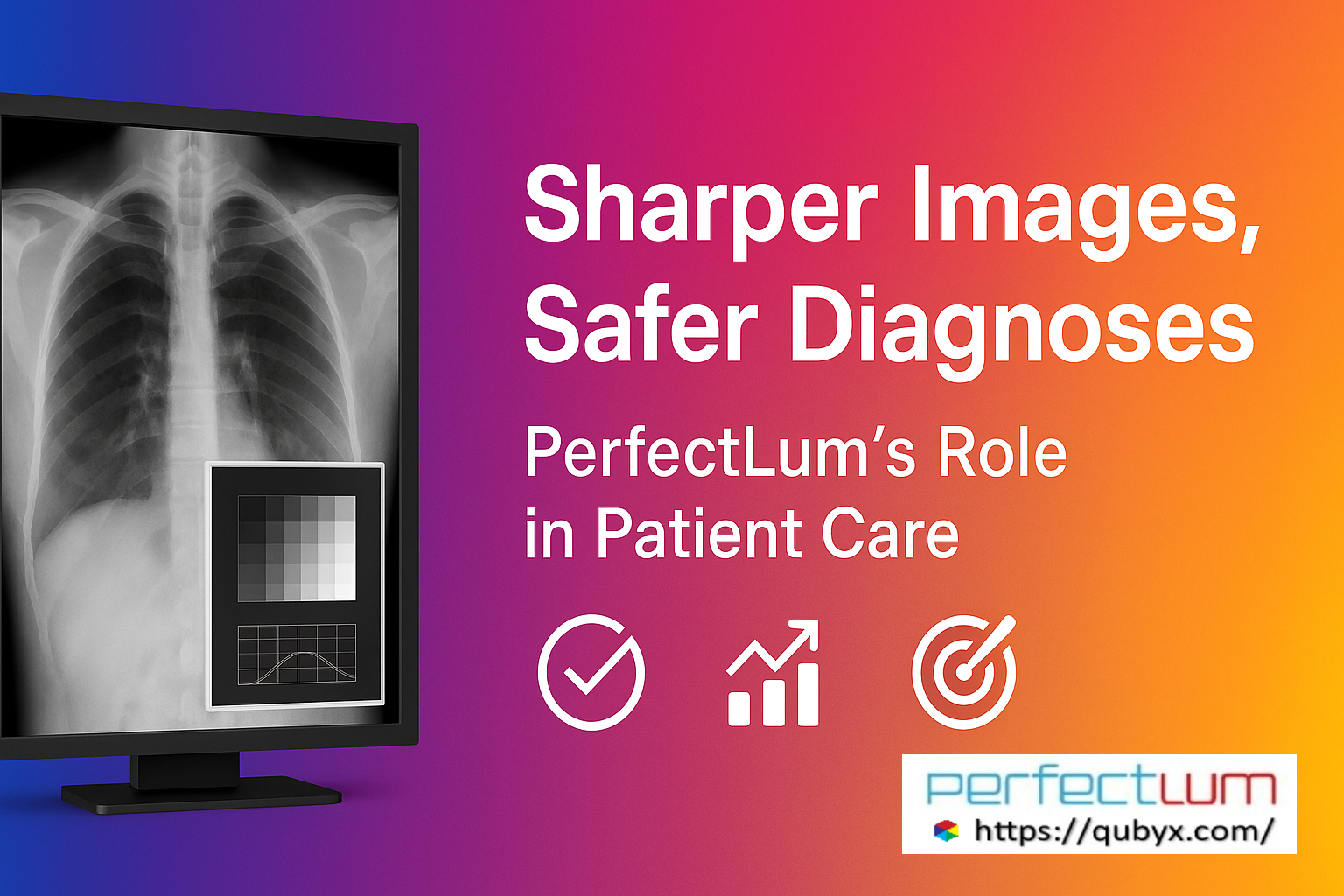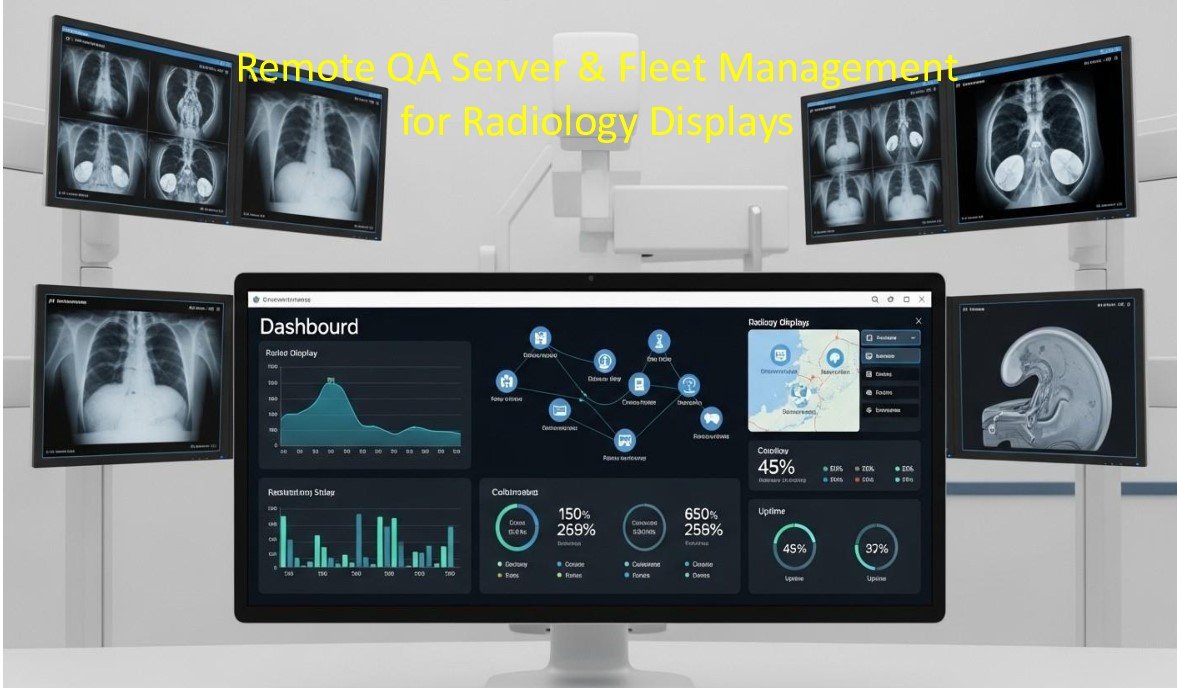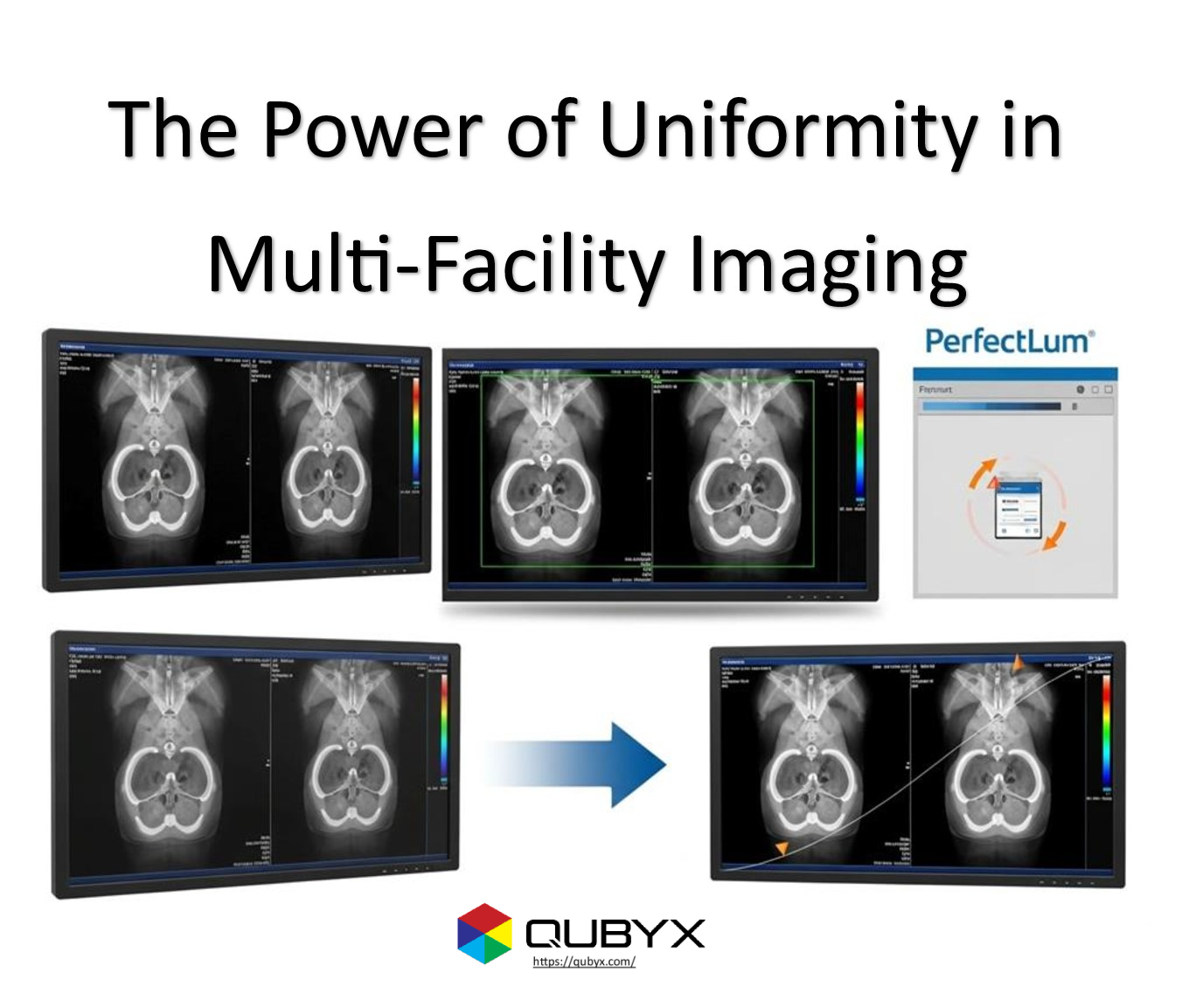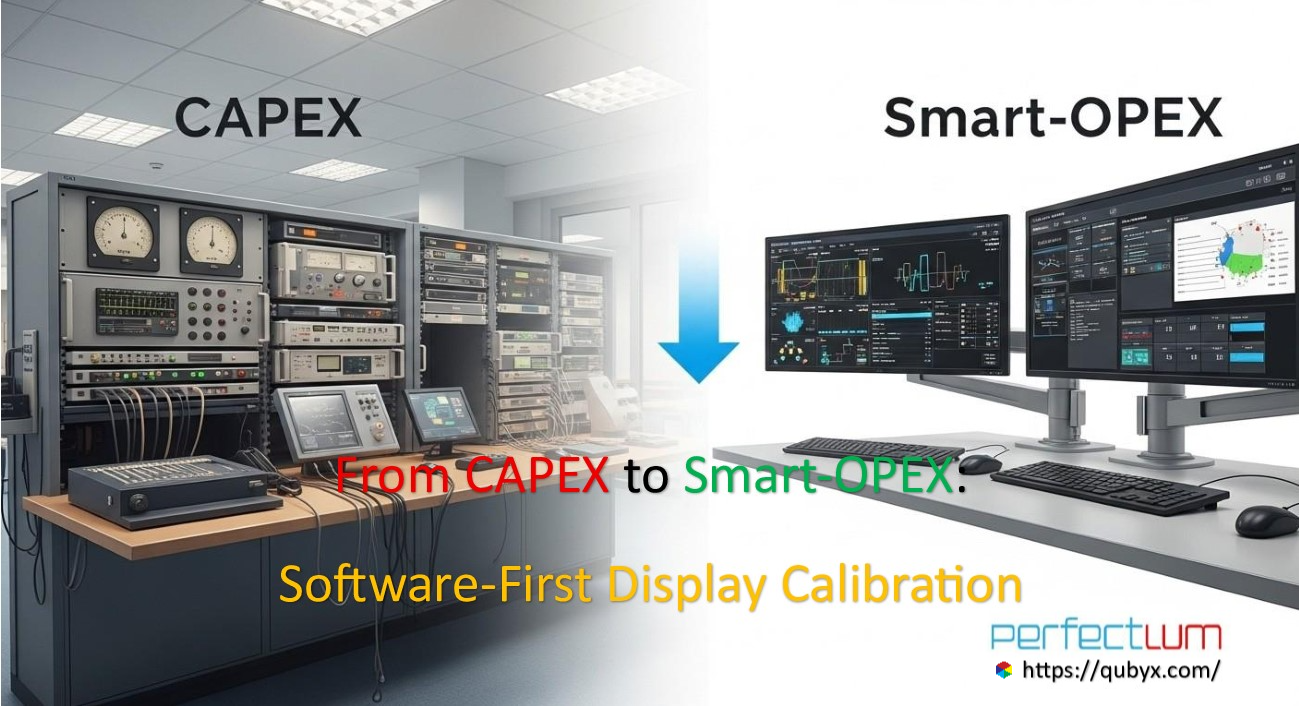News
- Home
- PerfectLum | Sharper Images, Safer Diagnoses

PerfectLum | Sharper Images, Safer Diagnoses
- September 11, 2025
- Shamsul
Sharper Images, Safer Diagnoses | PerfectLum Role in Patient Care
When outcomes hinge on millimeters and mild contrast, how an image is displayed matters as much as what the modality captured. A faint opacity at the lung apex, a microcalcification tucked in dense tissue, a low-contrast lesion in the liver—any of these can straddle the boundary between visible and invisible depending on the monitor. That’s why leading radiology and clinical teams treat display calibration and quality assurance as patient-safety work, not a cosmetic tune-up.
PerfectLum was built for that mission. It translates vision science and international standards into a practical, automated workflow that keeps displays diagnostic-ready—so clinicians can trust what they see, every time.
Why Display Calibration Is Clinical, Not Cosmetic
Medical images are information-dense. Their diagnostic value lives in subtle grayscale transitions and precise color overlays. Uncalibrated or drifting displays distort those signals in several ways:
- Non-uniform gray steps: The eye expects equal visual steps between grays. Without calibration, midtones may clump while shadows and highlights spread, hiding or exaggerating findings.
- Shifting luminance scale: Peak luminance falls as backlights age; black levels rise with time and ambient light. The result is compressed contrast where the eye is most sensitive.
- Inter-reader variability: Two clinicians can interpret the same case differently if their displays render differently; even the same reader can reach different conclusions across workstations or days.
- Regulatory exposure: Many jurisdictions and accreditation frameworks require evidence of calibration and routine testing. Lacking it, organizations face quality gaps and audit risk.
The fix isn’t “turn the brightness up.” It’s a standards-based approach that aligns displays with human perception and then proves they stay aligned.
Standards That Protect Perception
PerfectLum operationalizes the science and standards that make “diagnostic-grade” concrete:
- DICOM Part 14 GSDF (Grayscale Standard Display Function): Defines a luminance curve where each grayscale step represents an equal Just Noticeable Difference (JND) to the human eye.
- Barten contrast-sensitivity model: The perceptual foundation behind GSDF; it maps how the eye detects contrast across luminance ranges.
- Acceptance and constancy testing frameworks (e.g., AAPM TG18, DIN 6868 series): Provide validated test patterns and tolerances for luminance, grayscale, uniformity, and spatial performance.
- Color metrics (ΔE): Quantify color accuracy for hybrid workflows (nuclear medicine overlays, surgery planning, dermatology, dentistry, pathology).
These aren’t academic niceties—they are the rails that keep clinical displays honest.
How Perfectlum Safeguards Diagnostic Visibility
1) GSDF-accurate calibration
PerfectLum measures a display’s native response and computes precise corrections so its luminance output follows DICOM GSDF. Equal JNDs between gray steps mean equal perceptual differences on screen—critical for detecting subtle structures.
2) Luminance scale and black-level control
Calibration addresses both shape (the GSDF curve) and scale (maximum and minimum luminance). PerfectLum targets Lmax and Lmin appropriate to the room and modality, preserving shadow detail without washing out highlights.
3) Hardware LUTs and high-fidelity gradients
On medical-grade displays with internal LUTs, PerfectLum writes corrections directly to the panel for exceptional accuracy and stability. Where hardware LUTs aren’t available, carefully managed GPU LUTs and dithering maintain smooth gradients with minimal banding.
4) Ambient-light awareness
A perfectly calibrated display in a bright room is not a diagnostic display. PerfectLum incorporates ambient light assessment and guidance so viewing conditions match policy, keeping perceived contrast intact at the point of care.
5) Color characterization for modern workflows
Clinical images increasingly mix grayscale anatomy with color overlays (e.g., PET/CT, perfusion maps, heatmaps, annotations). PerfectLum adds color profiling with ΔE targets and consistent white points, aligning overlays and fused datasets across stations.
6) Multi-monitor matching and uniformity
Readers compare priors, side-by-side series, and multimodality views. PerfectLum helps match monitors in the same room or across sites so “the same image” looks the same—reducing cognitive friction and interpretation variability.
QA Automation: Where Compliance Lives Day To Day
Calibration is a starting line, not a finish line. Displays drift with age, temperature, and human meddling. PerfectLum turns routine QA into a push-button habit:
- Acceptance tests at installation create a documented baseline.
- Scheduled constancy checks (daily/weekly/monthly) verify GSDF adherence, luminance stability, uniformity indicators, and color drift using standards-aligned patterns.
- Thresholds and alerts flag out-of-tolerance results and recommend corrective actions.
- Trend graphs visualize slow degradation (e.g., falling Lmax) so you can plan service or replacements proactively—before readers feel the change.
Outcome: the fleet doesn’t just pass once; it stays in tolerance.
Enterprise-Scale Control for Pacs/It and Physics
Large clinical networks need more than a colorimeter and a checklist. They need orchestration.
- Central policy management: Define targets and QA intervals by department, room type, or modality (e.g., stricter regimes for mammography).
- Remote scheduling and execution: Push calibrations and checks overnight; minimize desk-side visits and reading-room downtime.
- Dashboards and role-based access: Give medical physicists, PACS admins, and biomed teams the visibility and permissions they need—no more, no less.
- Cross-platform coverage: Manage mixed fleets across Windows (including Windows 11) and macOS with consistent policies and reporting.
- Audit-ready documentation: Generate tamper-evident, time-stamped reports by device and location, complete with pass/fail status, tolerances, corrective actions, and drift trends.
This is quality control as a system, not an afterthought.
How Sharper Displays Translate into Safer Care
Mammography:
The difference between a confident call and a callback can be a handful of JNDs. Consistent GSDF adherence, stable luminance, low black levels, and disciplined ambient light help keep microcalcifications and faint spiculations visible across readers and sites.
Emergency and acute care:
Trauma and stroke workflows rely on fast, reliable reads—often on multiple workstations. When displays are matched and stable, radiologists spend less time adapting to each screen and more time interpreting the study.
Oncology follow-up:
Small changes in lesion conspicuity matter over time. PerfectLum’s multi-monitor matching reduces variability between today’s workstation and last year’s, supporting clearer longitudinal assessment.
Hybrid imaging (PET/CT, SPECT/CT) and advanced visualization:
Color overlays must convey quantitative meaning consistently. ΔE-tracked color calibration and standardized white points help ensure a perfusion map or SUV overlay communicates the same story room to room.
Tele-consultation and multidisciplinary meetings:
Even when not all stations are “primary diagnostic,” coherent calibration across secondary and presentation displays reduces confusion and re-explanations—saving time and lowering the risk of miscommunication.
Implementation Blueprint: Fast Path to Durable Results
- Inventory and baseline
Catalog every clinical display with model/serial, hours of use, role (diagnostic/secondary), room illuminance, and current performance. Run baselines to quantify drift and prioritize work. - Define policy targets
With medical physics and QA leadership, set GSDF tolerances, Lmax/Lmin targets, ambient ranges, ΔE thresholds (if applicable), and QA frequencies by modality and room class. - Calibrate high-impact stations first
Start with diagnostic reading rooms and mammography. Prefer hardware LUTs when supported; standardize warm-up procedures and room-light practices. - Automate QA
Schedule constancy checks with notifications and escalation paths. Use dashboards to monitor pass rates and trending metrics. - Document and review
Store acceptance and periodic QA reports centrally with access control and retention policies. Review trends monthly to catch early signs of panel fatigue. - Extend to the edge
Include acquisition consoles, technologist stations, and consultation screens. The entire chain—from acquisition to interpretation to discussion—benefits from predictable displays.
Measuring What Matters: Practical KPIs
- % displays in tolerance (GSDF, Lmax/Lmin, ΔE)
- Mean time to remediation after an out-of-tolerance alert
- Calibration/QA pass rate on first attempt
- Ambient-light compliance across reading rooms
- Variance of measured luminance across matched stations
- Audit cycle time (prep effort hours before accreditation)
You can’t improve what you don’t track; PerfectLum’s reporting makes these metrics visible.
Frequently Asked Questions
Will readers notice a change after calibration?
Often yes—especially in shadows and midtones. After a brief adaptation, readers typically report more predictable window/level behavior and less “screen surprise” when moving between rooms.
Is GSDF useful on non-medical displays?
Yes. While medical-grade panels offer advantages (uniformity correction, higher luminance, hardware LUTs), GSDF alignment and routine QA still reduce variability on commodity panels used for secondary tasks or tele-consults.
Can we achieve ΔE < 1 everywhere?
On supported hardware in controlled environments, sub-unit ΔE is attainable. Commodity panels may land slightly higher, but still within tight, predictable bounds for clinical overlays.
How often should we recalibrate?
Calibrate at acceptance, then recalibrate when constancy tests indicate drift beyond tolerance. Mission-critical stations (e.g., mammography) usually benefit from more frequent checks.
The Bottom Line
Sharper images don’t come from brightness alone; they come from perceptual accuracy that endures. PerfectLum embeds that accuracy into daily operations: GSDF-true calibration, luminance and black-level control, ambient-aware viewing, color fidelity for modern overlays, automated QA, enterprise orchestration, and audit-ready proof.
That chain of rigor—from pixels to perception—supports what matters most: safer diagnoses and better patient care. With PerfectLum, the display is no longer a variable. It’s an asset engineered for clinical confidence.
At QUBYX, we don’t just enhance images—we redefine what image quality means for the industries that depend on it.
PerfectLum, PerfectLum calibration, PerfectLum QA, medical display calibration, diagnostic imaging QA, DICOM GSDF calibration, Barten model, clinical display quality, radiology monitor calibration, medical imaging software, display QA automation, enterprise QA monitoring, compliance medical imaging, patient safety displays, PerfectLum patient care, PerfectLum USA, PerfectLum Europe, medical imaging calibration USA, medical imaging calibration Global,
Related Posts
- October 27, 2025
- News
Remote QA & Fleet Management for Home and Hospital Displays
- October 26, 2025
- News
The Power of Uniformity | How PerfectLum Solved a Multi-Facility
- October 25, 2025
- News
From CAPEX to Smart-OPEX: Shifting Hospital Calibration Spending with Software




